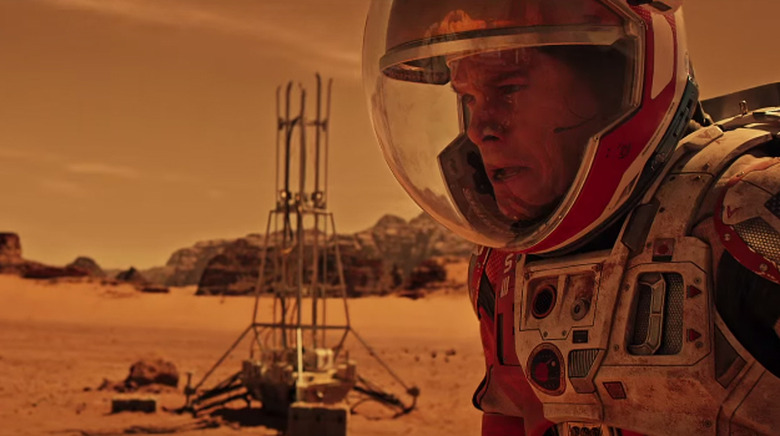The Amazing Tech That'll Help 'The Martian' Survive Alone On Mars
The Martian is one of the most highly anticipated movies hitting cinemas this fall and thanks to the smart marketing team behind the film we can now explore the amazing tech that'll help Mark Watney, played by Matt Damon, stay alive on the red planet until his peers return to rescue him.
DON'T MISS: Nobody is safe: Major App Store malware breach may affect millions of iPhone users
In addition to official trailers for the film, the studio also released plenty of viral marketing videos that made the movie seem like it's a documentary about a real mission to Mars, including interviews with the crew after an isolation project, and an introduction from renowned physicist Neil deGrasse Tyson.
To further get us ready for this mission to Mars, the team actually released the Ares 3 Mission Guide, a PDF document that includes details about the space mission, its duration, and some of the crew members, including Watney.
But what's interesting about the 17-page document, is that it actually describes some of the technology the stranded astronaut will use on the planet to survive well beyond a month.
The Hab
The Hab is the artificial habitat that can sustain 31 days of use on the planet. The Hab will be filled with supplies that will be sent to Mars on fourteen unmanned supply missions preceding the launch of the Hermes (more on that later).
The Hab is made of industrial canvas that can protect against electromagnetic waves and has 92 square meters of floor space, three lab tables, and two airlocks.
The life support systems are "state-of-the-art" and are monitored by a smart system that regulates temperature, oxygen, and water. The Hab has an Oxygenator and Water Reclaimer, emergency backup systems including LED lightning and spare oxygen tanks, and secondary and tertiary communication systems.
Solar panels placed in a farm outside the unit provide electricity while human waste and excrement are removed through a vacuum-dried waste removal system that is collected for NASA study purposes.
In other words, this Hab description provides some hints about the tools available at Watney's disposal to grow food inside the Hab for extensive periods of time.
Also interesting are the Hermes and Rover, both detailed in the document.
The Hermes
The Hermes is NASA's "once in a generation achievement" that will make the 124-day trip to Mars possible. However, the ship can only be used for space travel for up to five missions to Mars.
The Rover
Finally, the tank-sized Rover has an individual atmosphere complete with CO2 filters and airlock. The vehicle has a 9,000 Wh battery, reaches a top speed of 25kph and can withstand even the strongest Martian storms.
More details about this The Martian tech, and the astronauts are available in the full PDF.
